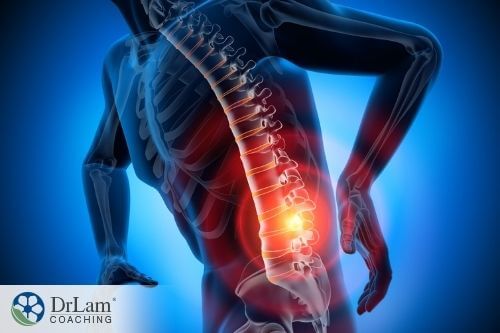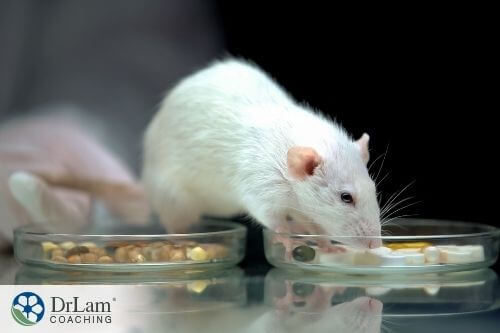In the last few years, we’ve seen a huge rise in the popularity of fasting. And, along with that rise in popularity, there’s been an increase in scientific studies regarding its efficacy as a weight-loss method as well as for its different health benefits. Recently, the fasting mimicking diet (FMD) has come into the spotlight as well, and it’s what we’ll focus on in this article.
 Fasting has been around for a long time. It has been used for religious and medical purposes in many different cultures. So, once again, science is confirming the benefits of a tradition people have been following for millennia.
Fasting has been around for a long time. It has been used for religious and medical purposes in many different cultures. So, once again, science is confirming the benefits of a tradition people have been following for millennia.
There are many types of fasting, and some people even combine different types in their health routine and recovery journeys.
This involves fasting for between a few hours and a couple of days. The most popular style of short-term fasting is intermittent fasting, also called time-restricted eating. This is where you have a window of a few hours to eat, and then you stop eating for the rest of the day. For example, an 8-hour eating window and a 16-hour fast. Some people like to do this kind of fasting consistently, every day or every other day.
Intermittent fasting has been studied quite a bit, and the results are mainly positive, although some studies have shown negative effects. What seems to be consistently positive is restricting your food intake to 12 hours a day. The mixed results come when you increase the fasting window and decrease the eating window to 16/8 or 18/4.
This is where you fast for several days, and it’s also what the fasting mimicking diet “mimics.”
Long-term fasting has certain benefits that short-term fasting does not. It is just a little more complicated to pull off and has certain risks you need to be aware of. This is especially the case if you have challenging health conditions, like type 1 diabetes or Adrenal Fatigue Syndrome (AFS). We’ll discuss these risks in more detail later in the article.
Most types of fasting revolve around not eating as well as not drinking any liquids that contain calories. You are, however, allowed to drink as much water as you like. In fact, it is usually recommended to keep well-hydrated during this time. Some fasting programs also allow you to drink certain herbal teas and even black coffee in some cases.
This is the kind of fasting where you abstain from both food and drink, including water. For example, the month of Ramadan requires Muslims to abstain from eating and drinking (as well as smoking) between sunrise and sunset. There are also people who take up dry fasting for health reasons.
The FMD is a diet created by the biologist and longevity researcher, Dr. Valter Longo. It's a low-calorie, low-protein, low-sugar, and high-unsaturated fat diet that is whole-foods and plant-based.
The meals consist of things like nut bars, soups, olives, vegetable crackers, herbal teas, and certain supplements.
It goes for five days. The first day’s calories are just above 1000 calories, while the other four days’ meals provide only 725 calories.
In that sense, you still get some nutrition and satiety, yet the calories are low enough to produce the same benefits as complete abstinence from eating. Your body will essentially respond the same as it would if you were not eating anything at all for those five days. This response is what creates the health benefits we’ll cover later.
The FMD requires that you repeat it periodically. For example, 3-4 times a year.
 There’s no denying that modern technology, including medical and sanitation technology, has benefited us greatly. Our lifespans have increased dramatically over the last 100 years and certain infectious diseases have been practically wiped out.
There’s no denying that modern technology, including medical and sanitation technology, has benefited us greatly. Our lifespans have increased dramatically over the last 100 years and certain infectious diseases have been practically wiped out.
But there has been a cost. As we live longer and our lifestyles become dependent on certain conveniences, chronic diseases are on the rise. For most people, the added years and decades don’t come with health and vitality. They come with disease, disability, and a huge decrease in the quality of life.
Unlike our ancestors, our biggest risk doesn’t come from a harsh environment or lack of resources, but actually from excess. This is at least the situation in rich countries. More specifically, the excess in comforts such as fast food, processed foods, overconsumption of sugar, overconsumption of animal products, alcohol, recreational drugs, over-reliance on pharmaceutical interventions, and a sedentary lifestyle.
Our top killers are termed "diseases of affluence" by some researchers, and they include cardiovascular disease, hypertension, diabetes, Alzheimer’s disease, and cancer. These are non-communicable diseases. They are not passed from person to person, but rather depend on a combination of genetics, risk factors, and lifestyle.
And when it comes to infectious diseases, such as COVID-19, having a preexisting chronic condition can increase mortality rates considerably. Cardiovascular disease and diabetes are some of the biggest risk factors, along with advanced age and obesity.
Fasting and the fasting mimicking diet have been put to the test to see their effects on such diseases, and the results so far have been quite revelatory. This has held true in both animal studies and in human clinical trials.
Before the agricultural revolution, most humans mainly survived as hunter-gatherers. This meant that tribes moved to where food and other resources were found and relocated once those resources were exhausted. That created periods of time when people didn’t eat, or ate quite sparingly. In a way, our ancestors were forced to fast. Including prolonged fasts.
Other species of animals had to (and still have to) do the same in the wild. Bears that hibernate don’t eat for months on end. The same is true for emperor penguins, even though they do not hibernate. They eat their fill during the summer months and put on quite a bit of body fat, which they then burn off when fasting during the winter months.
The human body has several mechanisms it launches in response to fasting. These mechanisms are, of course, what helped our ancestors survive periods of a lack of calories until they found new sources of food. These mechanisms are also what get you the benefits of fasting or the fasting mimicking diet.
Let’s now take a look at what happens to your body during the different stages of the fasting process.
 The first three to four hours after your last meal are considered phase one of fasting, even though your body is still dealing with that last meal. Your digestive system is breaking down the food, which is then either used for energy or stored away. Different digestive enzymes break down the fat, protein, and carbohydrates. The nutrients derived are allocated for different purposes.
The first three to four hours after your last meal are considered phase one of fasting, even though your body is still dealing with that last meal. Your digestive system is breaking down the food, which is then either used for energy or stored away. Different digestive enzymes break down the fat, protein, and carbohydrates. The nutrients derived are allocated for different purposes.
Your pancreas releases insulin to help move the glucose out of your bloodstream and into your cells, where it’s converted to energy. Glucose is the body’s main source of fuel. Excess glucose is then stored as glycogen or fat. Also, this is when your hunger and satiation hormones, ghrelin and leptin, are low and high respectively. This is what decreases your appetite after meals.
Once the first four hours are done, your body goes from an anabolic to a catabolic state. Anabolic states are growth states, while catabolic states are when the nutrients your body is storing are broken down and used up. For example, it uses up your glycogen stores. Glucagon, instead of insulin, is the hormone at work here. Insulin levels go down, as do blood glucose levels.
If you keep fasting, your body will start running out of glycogen and switch to using ketone bodies for energy. This process, which is called gluconeogenesis, is what proponents of the ketogenic diet aim for at all times. It’s interesting to note here that, even though your body can use fat as fuel, your brain still needs some glucose to function properly. So, as an extra step, your body also has to convert some of the fat and protein it has stored to glucose for the brain.
Now your body is mainly running on fat as fuel. As the fats are broken down, they release fatty acids, which travel to your liver. Your liver secretes something called peroxisome proliferator-activated receptor alpha, or PPAR-alpha, which helps regulate the process of lipolysis, or fat metabolism. This is how you end up with ketone bodies, which your body can then use to make energy instead of using glucose.
Many people undergoing these fasts report that it actually gets easier by the end of this stage. And the reason for this may be that ghrelin, the hormone that increases your appetite, has been steadily declining, lowering your hunger levels day by day.
At this point, your insulin and ghrelin are low and will remain that way until you break your fast. And, this stage is where you will start getting the true benefits of prolonged fasting.
You begin to see a decrease in growth hormone, C-reactive protein (CRP), insulin-like growth factor 1 (IGF-1), and insulin-like growth factor binding protein 1 (IGFBP-1). CRP is an inflammatory marker that, when its concentration increases in the blood, signals inflammation. It is a risk factor for heart disease. And high IGF-1 is associated with cancer, diabetes, and aging.
And, now you’ve had several days of blood glucose hovering around the lower part of the normal range.
Although some people fast longer than five days, even reaching several weeks, the FMD stops here, and for good reasons. We do not recommend extremely prolonged fasting to any of our clients. And even though we are talking about the benefits of fasting, we also don’t recommend 5-day fasts and even intermittent fasting to most of our clients. We’ll cover these risks and precautions in a later section of this article.
 Before we discuss specific studies on the effects of fasting and the fasting mimicking diet, it’s important to get a good understanding of one of the most important links between fasting and disease risk: inflammation.
Before we discuss specific studies on the effects of fasting and the fasting mimicking diet, it’s important to get a good understanding of one of the most important links between fasting and disease risk: inflammation.
Inflammation is part of your body’s immune response. It helps attack harmful pathogens and substances in your system and get rid of dead and damaged cells. In the NeuroEndoMetabolic (NEM) Stress Response model, it is one of the six circuits of organs and systems that work together to fight stress. The Inflammation Circuit is composed of your immune cells, your gut, and your gut’s microbiome. The microbiome is the collection of flora that live in your gastrointestinal tract.
Healthy inflammation requires these three components to be strong and healthy, and it also requires that your NEM’s Detoxification Circuit be running smoothly as well. That’s because the Detoxification Circuit - which is composed of your liver, interstitium, and immune system – is what helps rid your system of the byproducts of inflammation.
While acute inflammation is important and necessary for health, chronic inflammation is one of the most destructive conditions your body can be exposed to. It causes damage wherever it goes. In fact, it is at the core of many chronic diseases, including mental health issues, such as depression and anxiety.
The NEM model highlights the link between fasting and inflammation. The gut and microbiome in the Inflammation Circuit show how closely connected it is with food. Food, including what you eat and how often you eat, plays perhaps the biggest role in whether or not you develop chronic inflammation. And, since fasting has to do with abstaining from food, it can be one way to interrupt the inflammatory cycle.
There are two main ways food can cause inflammation:
There are certain inflammatory foods that are considered inflammatory, whether you have a specific allergy/sensitivity to them or not. For example: sugar, alcohol, sodas, dairy products, and highly processed foods. Overconsumption of any of these raises your body's inflammation levels.
But some foods can be a little more tricky. Many people are eating foods they're sensitive or allergic to and don’t even know it. Gluten is a common example. The confusing thing about gluten sensitivity is that it can manifest as neuropsychiatric symptoms as well, such as brain fog, anxiety, and mild depression. Without causing digestive symptoms. In such cases, it's difficult to make the connection between the gluten and the symptoms, so you keep eating gluten.
What’s happening on a physiological level is that the gluten triggers an immune response because your body is sensitive to it. That immune response creates inflammation in your gut, which then causes dysbiosis. Dysbiosis is the imbalance of your gut’s microbiome. Dysbiosis can lead the tight junctions in your gut lining to loosen, creating leaks. This is what is sometimes referred to as a leaky gut.
These leaks then allow pathogens, food particles, toxins, and other substances into your bloodstream that shouldn’t be there. This then triggers another immune system attack and more inflammation. And the cycle keeps repeating every time you eat gluten or other foods you’re sensitive to, causing chronic inflammation to develop in your gut.
Chronic inflammation almost always begins in the gut, but can then travel to other areas of your body. If it reaches your brain and central nervous system, it creates neuropsychiatric symptoms. If it reaches the skin or joints, it can cause rashes or pain. And so on.
 The other common issue is overeating. Your gastrointestinal tract and microbiome need rest from the process of digestion. And many people these days are constantly grazing throughout the day until the time they go to bed. This doesn’t allow your gut and microbiome to rest and rebalance, and that can lead to them overworking and being put under a lot of stress.
The other common issue is overeating. Your gastrointestinal tract and microbiome need rest from the process of digestion. And many people these days are constantly grazing throughout the day until the time they go to bed. This doesn’t allow your gut and microbiome to rest and rebalance, and that can lead to them overworking and being put under a lot of stress.
Chronic stress of any kind, including physiological stressors like overeating, contribute to your adrenals overworking to produce cortisol, your body’s main anti-stress hormone. And cortisol affects inflammation.
When you’re healthy, just enough cortisol is released to neutralize the acute inflammation that was needed for a short period of time. But when your system has chronically high or chronically low cortisol, as we see happen with AFS, that can lead to chronic inflammation.
This is why those with adrenal fatigue and under chronic stress often have underlying levels of chronic inflammation. And it is also why taking steps to reduce inflammation, like fasting, could be a good idea for some people.
It can. First, fasting can help break the cycle of consuming inflammatory foods and so allow your immune system to rest and for inflammation to be neutralized. It can help your gut microbiome get the break it needs to rebalance, so you no longer have dysbiosis. The leaks in your gut also get the chance to tighten once again. Of course, if you then eat those inflammatory foods right after your fast, the cycle restarts.
That’s why, if you have problematic symptoms, along with fasting you may also want to try an elimination diet where you cut out all suspect foods and reintroduce them one by one. If one of them triggers any symptoms, then you know you should cut that food out for good. Another option is to get food sensitivity testing done, which we offer many of our clients at the Lam Clinic.
Time-restricted eating is a great solution to the grazing and overeating issue. You are only allowed to eat during a specific timeframe. But the question then becomes: what is the ideal fasting/eating window? Some studies have shown that refraining from eating 12 hours a day every day is actually a better intermittent fasting target than doing the 16/8 or 18/4 type of intermittent fasting long-term.
The 12 hours are sufficient to allow your gut and microbiome to rest and rebalance yet don't then create some of the metabolic issues associated with the other types of intermittent fasting. Those types can be quite beneficial at first, but after a while can cause your metabolism to slow down. Your body thinks that there is a prolonged shortage of food and so slows down your metabolism in order not to burn its energy and nutrient stores too quickly.
Dr. Walter Longo and his associates studying the effects of the FMD on mice and humans have gotten some interesting results.
 First, let’s look at the mouse studies. They fed mice a high-fat and high-calorie diet (HFHC), then put one group through several cycles of the FMD. In the group that was put through several cycles of FMD, they found:
First, let’s look at the mouse studies. They fed mice a high-fat and high-calorie diet (HFHC), then put one group through several cycles of the FMD. In the group that was put through several cycles of FMD, they found:
Another interesting study on mice was done using the streptozotocin (STZ) model. STZ is an antibiotic that's particularly harmful to the pancreatic islet β-cells. These are the cells that produce insulin and which are no longer functioning in those with Type 1 Diabetes. In essence, STZ is used by researchers to create Type 1 Diabetes in mice in order to use them in experimentation. With the FMD, they found that several cycles reversed Type 1 Diabetes in STZ mice.
In human clinical trials, participants were put on the fasting mimicking diet for five days a month for three months. There were different participants with different risks, and each risk group was compared to a control group. This means that the at-risk groups’ results on the FMD were compared to the results obtained from healthy participants undergoing the same diet cycles.
These were some of the results:
What these results indicate is that at-risk people could benefit a lot more from undergoing the FMD or prolonged fasting cycles, as their disease markers and risks would decrease significantly more than healthy people.
 While fasting and the FMD seem to be very promising tools to use in many cases, they are not suitable for everyone. For example, for growing children who need constant fuel and nutrients to grow, for pregnant and breastfeeding women, and for those with certain health conditions, depriving the body of nutrients for long periods is not a good idea.
While fasting and the FMD seem to be very promising tools to use in many cases, they are not suitable for everyone. For example, for growing children who need constant fuel and nutrients to grow, for pregnant and breastfeeding women, and for those with certain health conditions, depriving the body of nutrients for long periods is not a good idea.
Because we deal with many clients that have adrenal fatigue and NEM dysregulation, we want to talk about why we don’t usually recommend fasting for these conditions.
Adrenal Fatigue Syndrome (AFS) is a condition you develop when your body faces chronic stress. That stress puts a lot of pressure on your adrenal glands to produce cortisol. Although cortisol naturally fluctuates throughout the day, if it increases above or decreases below the healthy range consistently, it will affect your entire system.
Symptoms of AFS include fatigue, weight gain, sleep disturbances, brain fog, anxiety, mild depression, hair loss, dry skin, loss of libido, PMS, infertility, hypoglycemia, salt and sugar cravings, lowered immunity, unstable blood pressure, heart palpitations, food and drug sensitivities, and digestive issues.
The reason the symptoms are so varied is because of how your adrenals are connected with the rest of your NEM. They are part of your NEM’s Hormone Circuit, along with your thyroid and reproductive organs. The other five NEM circuits are the Bioenergetics, the Neuroaffect, the Cardionomic, the Inflammation, and the Detoxification Circuits. Each circuit has three main components. And some components are present in more than one circuit, linking the circuits together.
Your NEM is a kind of global response to stress. And the adrenals are its first responder. But with chronic stress, the adrenals can dysregulate and then drag the entire NEM along with them. And the problem with fasting is that, in such cases, it will be taken by your body, and hence by your NEM, as a major stressor. When your body has to scramble to change fuel sources, it can put pressure on your already exhausted adrenals.
With AFS, your adrenals need to have their nutrient and energy stores replenished, as does your entire body. In fact, a major keystone of adrenal fatigue recovery is eating a nutrient-dense adrenal fatigue diet that focuses on timing your meals to every three to four hours. That way you don’t get any blood sugar spikes or crashes, which are common in AFS patients. These are huge stressors on your body as well.
AFS sufferers can often experience hypoglycemia when blood sugar levels are too low. Hypoglycemia can then trigger sugar cravings, where you end up overeating and causing blood sugar spikes. This then prompts your pancreas to secrete too much insulin, which will then cause a blood sugar crash. These cycles of spikes and crashes can be extremely detrimental to health. They can cause even more inflammation and stress and are difficult to interrupt.
Fasting and the FMD reduce blood sugar levels, albeit gradually. Still, if your AFS is advanced, it might not be a good idea to expose yourself to the risk of hypoglycemia. Especially at night. This is why our adrenal fatigue diet is not just about the kind of food you eat, but how often you eat. We also recommend a snack before bed in order to keep your blood sugar levels stable while you sleep.
 Another problem is that, with AFS and NEM dysregulation, you are at a higher risk of developing metabolic issues. You don’t want to take the risk of pushing your metabolism over the edge. Even intermittent fasting can end up slowing your metabolism down, which is already quite slow in AFS. This is one of the reasons that easily gaining weight and difficulty losing it are very common AFS symptoms.
Another problem is that, with AFS and NEM dysregulation, you are at a higher risk of developing metabolic issues. You don’t want to take the risk of pushing your metabolism over the edge. Even intermittent fasting can end up slowing your metabolism down, which is already quite slow in AFS. This is one of the reasons that easily gaining weight and difficulty losing it are very common AFS symptoms.
AFS and NEM dysregulation can cause paradoxical reactions in your system. Meaning, your body reacts opposite to what it’s supposed to in response to certain medications, supplements, and health protocols. That includes fasting and the FMD. You may find your body holding onto the weight instead of shedding it. Or you might find your inflammation levels rising due to fluctuations in cortisol and other stress hormones.
The possible reactions are many and can be quite unpredictable. That's why we recommend against the Fasting Mimicking Diet for our clients, except in very specific cases.
Fasting and the Fasting Mimicking Diet can be very powerful tools for your health and wellbeing. The many animal studies and human clinical trials are showing quite impressive results. Especially for those at higher risk of chronic diseases such as cardiovascular disease, diabetes, and cancer.
There are several reasons why long-term fasting and the FMD can be so effective. First of all, they help decrease certain disease markers, such as IGF-1, CRP, and blood glucose levels. They are also great for weight loss.
The difference between doing a 5-day fast and the FMD is that with the FMD you still eat. You get the nutrients you need and some satiety. But, your calories are low enough to mimic the same physiological responses as fasting. Short-term fasting, such as intermittent fasting, does not provide the same benefits, even if done consistently. In fact, it can sometimes backfire.
But even with all of these potential health benefits, we don’t usually recommend fasting or the FMD to our AFS and NEM dysregulated clients. That’s because your body is already quite weak and your stress response can cause paradoxical reactions. You might find yourself with an even slower metabolism, more difficulty losing weight, increased inflammation, and more unstable blood sugar levels.
We do not rule fasting out completely. But we only advise it in very specific cases and only after AFS recovery has progressed very well. If you’d like to talk to one of our coaches about our nutritional programs as well as about fasting, get in touch at +1 (626) 571-1234 for a free initial call.
The Fasting Mimicking Diet is a diet developed by the biologist and longevity researcher, Dr. Valter Longo. It promises to provide the same health benefits as prolonged fasting without completely abstaining from food. The studies coming out on it are quite promising, especially for at-risk patients.
